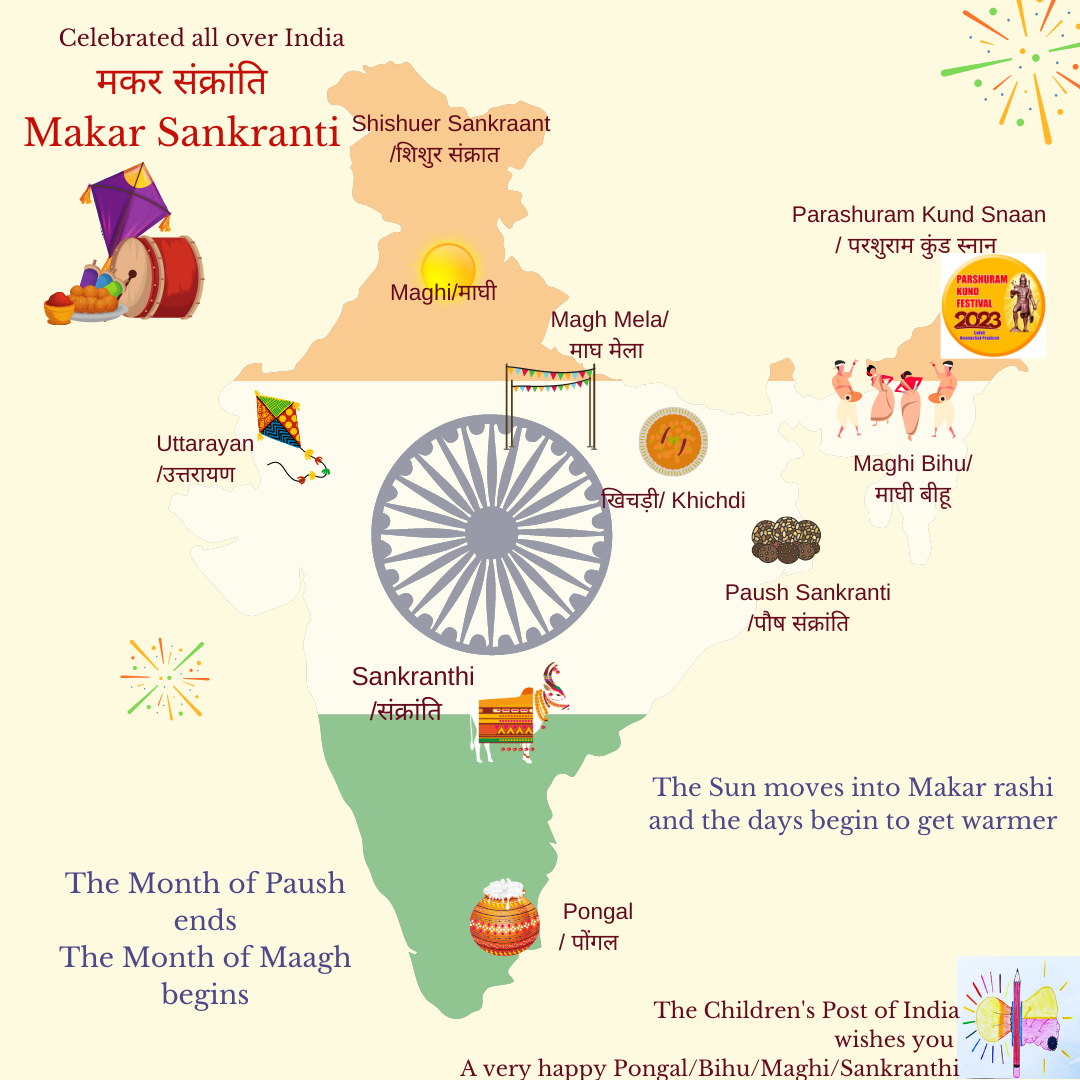Today, almost every part of India is celebrating a festival.
Some parts are celebrating it tomorrow, because according to the Hindu calendar, the Tithi (date) spans two days – 14th and 15th, this year.
Two things happen on the day of Makar Sankranti:
- The sun moves from Dhanu rashi to Makar rashi (constellation) in the sky. This marks the beginning of warmer days. (The word Sankranti means to move to a new constellation)
- The Indian calendar month of Paush ends and Magh begins. In some Hindu calendars, this marks the end of Shishir (winter) ritu, and in some, it falls in the middle of Shishir.
About the Indian Calendar System
The Indian calendar has 12 solar months divided into six seasons (Ritu) of two months each. Paush and Magha form Shishir – winter.
The other five Ritus (seasons) are:
Vasant (Spring) – Phalgun, Chaitra
Grishma (Summer) – Baisakh, Jyeshtha
Varsha (Monsoon) – Ashadh, Shravana
Sharad – Bhadra, Ashwin
Hemant (Hemant means golden. Corresponds to Fall) – Kartik, Agrahayana

Rituals associated with this festival
Jaggery is commonly found in dishes made at this time.
In addition, harvest rituals, dancing, and good food dominate the festivities.
As the weather improves, Magh mela in UP and Ganga Mela in Bengal are held.
In Arunachal, devotees take a dip in the holy Parshuram Kund.
In Gujarat and Andhra Pradesh, kite flying leads to much fun.

